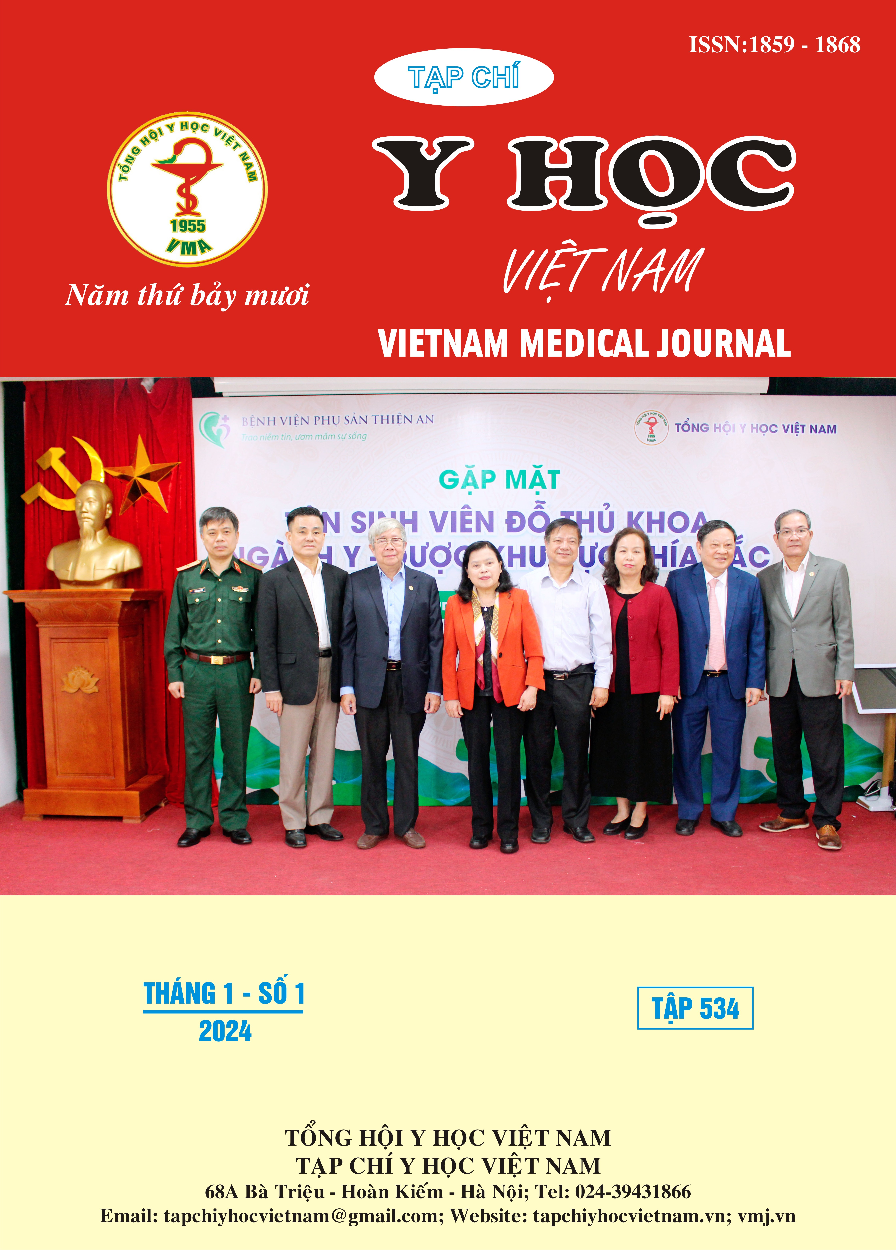SOME CLINICAL CHARACTERISTICS AND TREATMENT RESULTS OF SCIATIC PAIN CAUSED BY LUMBAR DISC HERNIATION USING A REMEDY COMBINED WITH ELECTROACUPUNCTURE AND SPINAL STRETCHING
Main Article Content
Abstract
Background: Lumbar disc herniation is a common condition that can affect individuals of all ages and genders. Currently, a combination of drug therapy, non-pharmacological measures, and physical therapy has proven effective in reducing symptoms and shortening the treatment duration. Objective: To assess the clinical characteristics and treatment outcomes for sciatic pain caused by spinal disc herniation using the "Than thong truc u thang decoction" in combination with electroacupuncture and spinal stretching. Materials and methods: The clinical intervention research method, without a control group, was employed to evaluate results before and after treatment in 60 patients with sciatic pain due to spinal disc herniation. Results: The majority of patients were in the 40-60 age group, with a higher proportion of women than men. Both the bell and Lasègue signs were present in 100% of cases. After treatment, the Visual Analog Scale (VAS) score decreased from 7.5 ± 0.567 to 4.05 ± 0.746. The Lasègue test, Schober index, and bare hands all showed significant improvement after 15 days of treatment. Conclusion: The combined regimen of medication, electroacupuncture, and spinal stretching effectively reduces pain and improves mobility in patients experiencing sciatic pain due to spinal disc herniation.
Article Details
References
2. Zhuomao Mo, Dong Li, Renwen Zhang, Minmin Chang, Binbin Yang (2019), “Comparisons of the effectiveness and safety of tuina, acupuncture, traction, and Chinese herbs for lumbar disc heniation: A systematic review and network meta-Analysis”, Evidence-Based Complementary and Alternative Medicine
3. Nguyễn Trung Kiên (2018), “Nghiên cứu đặc điểm lâm sàng và cộng hưởng từ ở bệnh nhân Thoát vị đĩa đệm cột sống thắt lưng tại Bệnh viện Quân y 4”, Tạp chí Y dược học Quân sự tháng 3 – 2018, tr.79-84.
4. Nguyễn Văn Hưng, Nguyễn Trúc Quỳnh, Nguyễn Thị Tân (2019), Hiệu quả điều trị đau thần kinh tọa thể huyết ứ bằng bài thuốc thân thống trục ứ thang kết hợp điện châm, Tạp chí Y Dược học - Trường Đại học Y Dược Huế, tập 9, số 4 - tháng 7/2019
5. Đỗ Thị Lệ Thúy (2018), Nghiên cứu mối liên quan giữa lâm sàng, hình ảnh cộng hưởng từ với yếu tố nguy cơ của vữa xơ động mạch ở bệnh nhân Thoát vị đĩa đệm cột sống thắt lưng, Luận án Tiến sỹ y học, Học viện Quân y, Bộ Quốc phòng, Hà Nội.
6. Daniel T. Lilly, Mark A. Davison, Cody M. Eldridge, Ravinderjit Singh, Eric Y. Montgomery, Carlos Bagley, Owoicho Adogwa (2020), “An Assessment of Nonoperative Management Strategies in a Herniated Lumbar Disc Population: Successes Versus Failures”, pp:1-10
7. Nguyễn Văn Tuấn, Trần Thị Oanh (2021), Kết quả điều trị đau dây thần kinh tọa do thoát vị đĩa đệm bằng phương pháp điện châm kết hợp kéo giãn cột sống thắt lưng, Tạp chí Y học Việt Nam, tập 501 số 1 - tháng 4/2021.
8. Vũ Thị Tâm, Nguyễn Phương Sinh (2018), Đánh giá kết quả bài tập McKenzie kết hợp vật lý trị liệu – phục hồi chức năng trên bệnh nhân hội chứng thắt lưng hông, Tạp chí Y học Việt Nam, tập 462, số 1 - tháng 1/2018.


